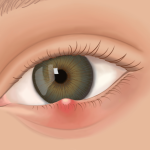What is bleeding after menopause?
Menopause is the time when you stop having periods at around the age of 51 years. You’ve reached menopause when you have not had a period for 12 months.
Up to 1 in 10 females experiences vaginal bleeding or spotting after menopause. This is called ‘postmenopausal bleeding’.
However, perimenopause is the stage of life leading up to your last menstrual period. This stage can last 4 to 6 years. A common feature of perimenopause is irregular periods.
Can periods restart after menopause?
Your periods cannot restart after menopause. Once you have reached menopause, any vaginal bleeding is not normal. You should always have it checked by a doctor.
What can cause bleeding after menopause?
There are many causes for vaginal bleeding after menopause, including:
- atrophic vaginitis (inflammation and thinning of the lining of your vagina)
- thinning of the lining of your uterus (womb)
- thickening of the lining of the uterus
- polyps (growths) on your cervix or uterus
- sexually transmitted infections (STIs)
Some cancers can cause vaginal bleeding after menopause, such as:
- cervical cancer
- cancer of the uterus — including endometrial cancer
- ovarian cancer
- vaginal cancer
Menopausal hormone therapy (MHT)
Menopausal hormone therapy, also called hormone replacement therapy (HRT) can sometimes cause vaginal bleeding. You should check with your doctor if you have bleeding while taking MHT.
When should I see my doctor?
In most cases, postmenopausal bleeding is not serious. But bleeding after menopause can sometimes be a sign of a serious condition that needs treatment. So, always see your doctor if you have bleeding after menopause.
How is bleeding after menopause diagnosed?
Your doctor will ask about your symptoms and your health in general. They might ask you:
- how long you have had vaginal bleeding
- how often you have noticed the bleeding
- how heavy the bleeding is
- when the bleeding happens (for example, if you have bleeding after sex)
Let them know if you have had any other symptoms and whether you are taking menopausal hormone therapy (MHT).
Your doctor will examine you. They may ask to do a vaginal examination and check your cervix (the entrance to your womb) using a medical device called a speculum. This is the same device that’s used when you have a cervical screening test (which feels the same as a Pap test).
They will recommend some tests to find the cause of your bleeding, such as:
- an ultrasound scan, which may include a vaginal ultrasound
- blood tests
- a swab of your vagina and cervix to test for infections and abnormal cells
Your doctor will also refer you to a gynaecologist — a doctor who specialises in female health — for further tests. These tests may include a:
- hysteroscopy (a procedure that uses a small camera to look inside your uterus)
- dilatation and curettage (D&C)
How is bleeding after menopause treated?
Your treatment will depend on what is causing the bleeding.
It may involve:
- hormonal treatments
- medicines to control problems with the lining of your uterus
- surgery — such as a D&C


